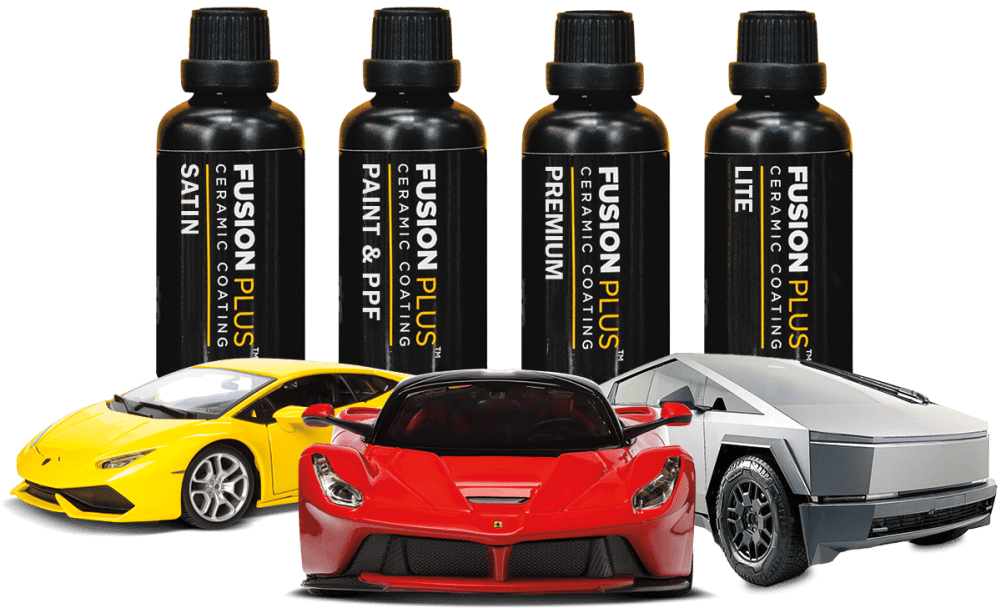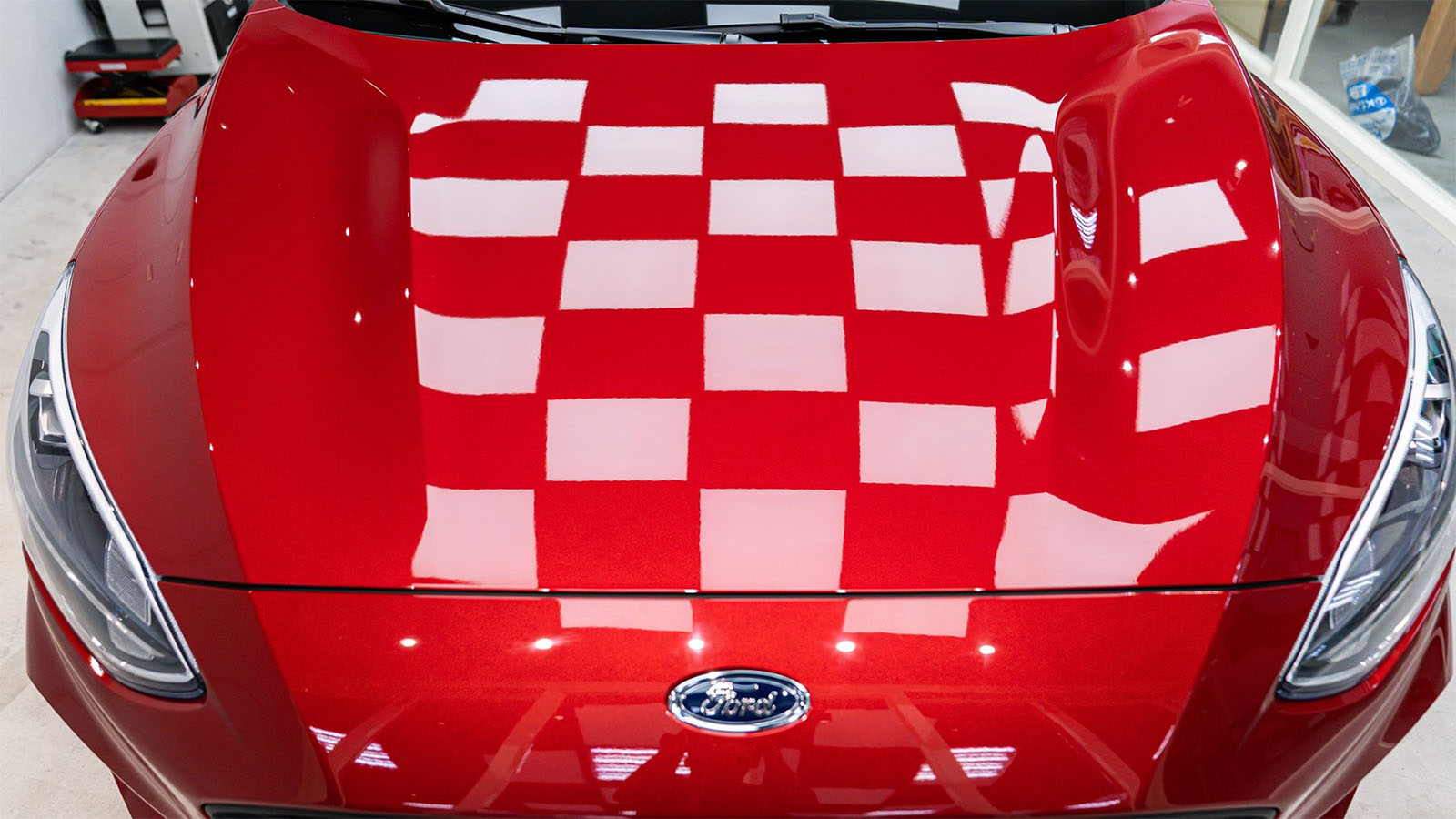The Ultimate Overview to Understanding Ceramic Coating and Its Advantages
Wiki Article
The Function of Ceramic Coating in Shielding Your Cars and truck's Paint From Environmental Damage
Ceramic coating has actually become an innovative option for vehicle proprietors seeking to preserve the stability of their vehicle's outside. By establishing a durable chemical bond with the paint, this advanced modern technology provides an awesome barrier versus different ecological threats, such as UV rays, acid rainfall, and contaminants. Nevertheless, understanding the detailed benefits and the ins and outs of the application process is necessary for optimizing its efficiency. As we discover the nuances of ceramic layer, it becomes obvious that the selection to implement this safety action could substantially affect your automobile's longevity and aesthetic.What Is Ceramic Layer?
Ceramic coating is an advanced liquid polymer applied to the exterior surfaces of a lorry, designed to offer a long lasting layer of defense for the paint. This cutting-edge solution forms a chemical bond with the vehicle's factory paint, producing a hydrophobic and durable shield. The finishing is composed of nanoparticles that fill up in the microscopic blemishes in the paint, resulting in a smooth surface area that boosts beam and gloss.Commonly, ceramic layers are readily available in numerous formulas, enabling different levels of defense and durability. While some products can last for several months, others offer defense for a number of years, depending upon the thickness of the application and ecological aspects. The application process requires thorough prep work, consisting of cleaning, decontaminating, and polishing the vehicle's surface area to make certain optimum bond of the coating.

Advantages of Ceramic Finishing
One of the key benefits of applying a ceramic finish is the extraordinary protection it uses to automobile paint. This innovative finishing forms a long lasting layer that shields the automobile's surface from a range of ecological risks, consisting of UV rays, acid rain, bird droppings, and tree sap. By giving this robust protection, ceramic coatings substantially reduce the danger of fading and etching, preserving the automobile's visual charm with time.
Along with security, ceramic coatings are renowned for their hydrophobic residential properties, which fend off water and dust, making it less complicated to maintain a clean lorry. This self-cleaning effect minimizes the regularity of washing, saving both time and sources. In addition, ceramic layers improve the depth of the paint's gloss, leading to a polished and dynamic look that boosts the total look of the lorry.
An additional notable benefit is the durability of ceramic finishes. Unlike standard waxes or sealers that call for frequent reapplication, ceramic finishings can last a number of years, using a cost-efficient solution for car owners seeking long-term protection. Overall, purchasing ceramic covering results in enhanced sturdiness, lowered upkeep, and continual aesthetic charm for automobile paint.
How Ceramic Covering Works
A ceramic covering operates via a chemical bonding procedure that produces a protective layer on the car's paint surface. This cutting-edge solution uses sophisticated nanotechnology, where microscopic fragments of silica are put on hold in a liquid kind - ceramic coating. Upon application, these particles bond with the manufacturing facility paint, developing a hydrophobic and durable layer that improves the automobile's surface areaThe major element of ceramic coverings, silicon dioxide (SiO2), contributes to the layer's stamina and durability. When healed, the finish transforms right into a difficult, glass-like finish that guards the paint from environmental impurities such as dust, UV rays, bird droppings, and tree sap. This molecular bond results in a surface area that is not only immune to scratches yet likewise easier to clean up, as dirt and gunk are less most likely to adhere.
Furthermore, the hydrophobic buildings of ceramic finishings cause water to bead and slide off, reducing the possibilities of water spots and mineral deposits. This safety barrier properly prolongs the life of the paint and preserves the vehicle's aesthetic allure, supplying vehicle proprietors a lasting option for paint protection.
Application Process of Ceramic Layer
When considering the application of ceramic coating, preparation is key to achieving optimum outcomes. Any type of imperfections or scratches need to be resolved at this phase, as the finish will certainly bond with the surface underneath.

Ceramic layer is after that used in tiny sections, typically making use of an applicator pad. The car should be left to treat in a controlled atmosphere to allow the finish to fully bond with the paint.
Long-Term Upkeep and Care
Attaining an effective ceramic layer application establishes the foundation for long-lasting protection, however appropriate upkeep is crucial to preserving its benefits. Normal washing is necessary; using a pH-neutral cars and truck shampoo will assist preserve the layer's integrity without triggering damages. Prevent automated car cleans that usage rough products, as they can compromise the finish's surface.
Moreover, using a ceramic layer maintenance spray can enhance the existing layer, offering an additional increase in defense and shine. It's a good idea to do this every 3 to 6 months, relying on ecological direct exposure.
Last but not why not look here least, car parking in shaded areas or using automobile covers can stop extended direct exposure to dangerous UV rays and ecological impurities, further extending the life of your ceramic finishing. By adhering to these maintenance practices, you can ensure your automobile's finish remains safeguarded and aesthetically appealing for several years to find.
Final Thought
In summary, ceramic covering works as a vital protective action for auto paint, properly protecting cars from a series of environmental threats. Its capacity to develop a robust hydrophobic barrier not just boosts aesthetic appeal yet likewise substantially lowers the regularity and intensity of maintenance called for. The resilient nature of this advanced polymer emphasizes its value in preserving lorry stability and appearance, inevitably adding to a more visually appealing and long lasting automobile coating.Ceramic finish is a sophisticated liquid polymer used to the outside surface areas of an automobile, designed to give a sturdy layer of protection for the paint. Ceramic layers improve the deepness of the find more info paint's gloss, resulting in a polished and lively look that raises the total look of the car.
A ceramic sites coating runs via a chemical bonding process that develops a protective layer on the vehicle's paint surface area.The main part of ceramic finishings, silicon dioxide (SiO2), adds to the finish's stamina and strength.In summary, ceramic layer serves as a crucial protective procedure for auto paint, efficiently protecting vehicles from a range of ecological risks.
Report this wiki page